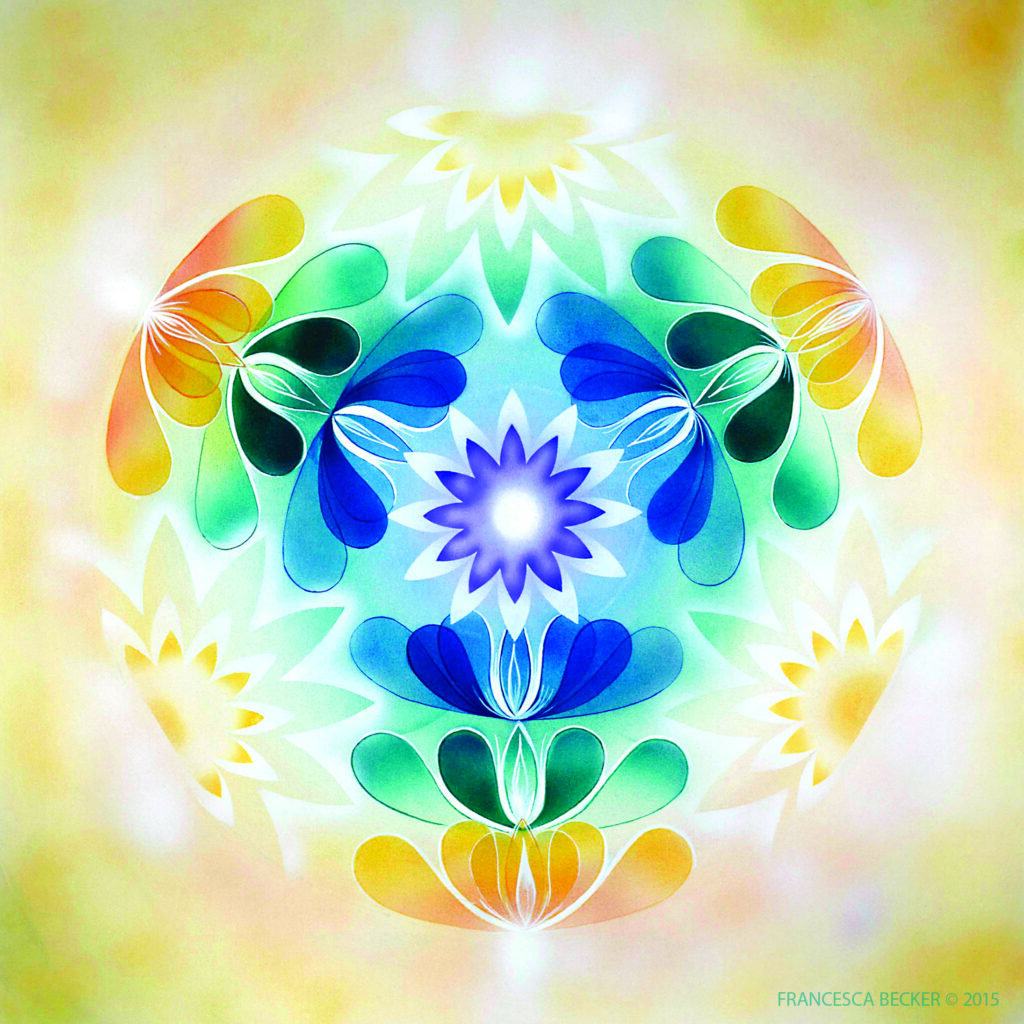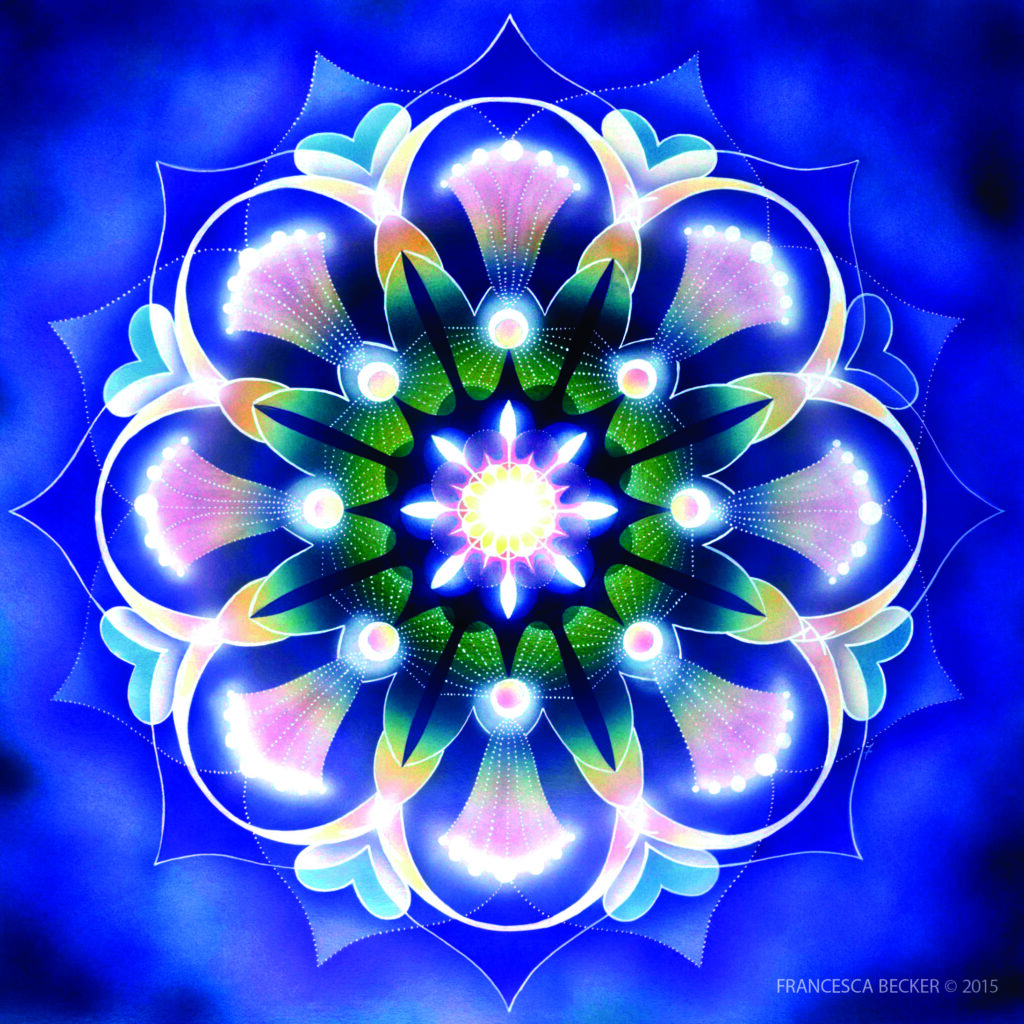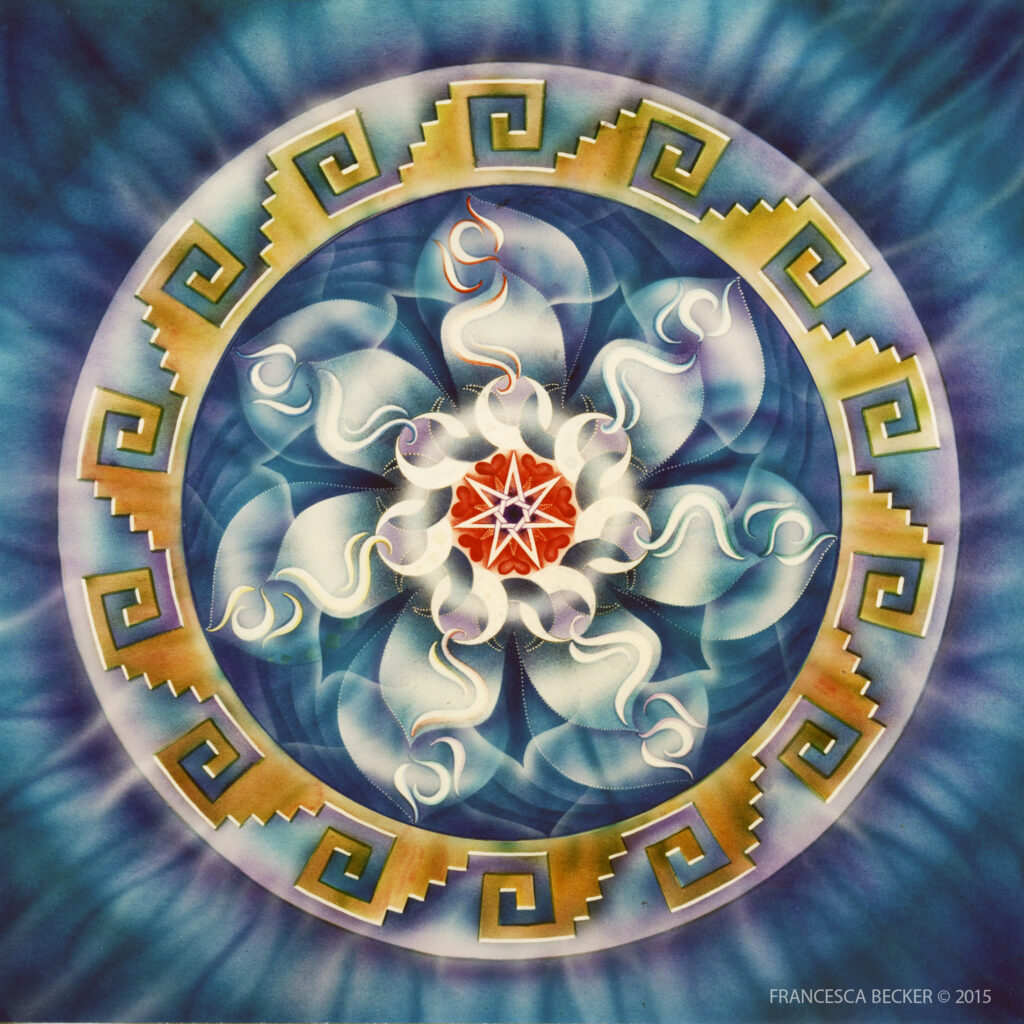Visual Meditation
For this weekend’s meditation, I’d like to share a different form of meditation than what I usually create for you. In my Masters of Wisdom & Meditation Teacher Training we study all types of meditation, including visual meditation. Sri yantra is a popular form of visual meditation. It is rooted in India’s Vedic and yogic traditions. For thousands of years, people have meditated by staring into the devotional labyrinths of Buddhist mandalas and Hindu yantras in order to achieve higher states of consciousness. These are visual representations of the journey of evolution, usually depicting a deity in the center that acts as the source of one-ness. Around the deity are ever-opening concentric circles (mandala is a Sanskrit term meaning “circle”), other geometric shapes, and depictions of nature or holy scenes.
Click here for a larger version of the sri yantra.
Sri (also spelled shri and pronounced shree) is Sanskrit for “wealth” or “abundance;” in this case it means “most revered.” Yantra is a Sanskrit word for “vehicle” or “instrument.” So the sri yantra is a revered visual instrument that uses the mathematical proportions known as the golden ratio. The scientific proportions used to create such structures as the Parthenon, and the Great Pyramid at Giza are based on the same naturally occurring sacred ratios we witness in the development of pine cones, ferns, succulents and nautilus shells. The sacred geometrics of the sri yantra depict a pure visual expression of the journey of existence, expanding from the cosmic one-ness (the source) to multiplicity (our personal expression of the universe) and then back to one-ness—all the while providing that very experience of one-ness. It is a meditation in itself.
The simultaneously static and dynamic interplay of all the elements of the sri yantra—squares, circles, “perfect” triangles, lines, and a point—depict the process of evolution (growth away from the source) and involution (coming from multiple layers back to one single source) in the form of a visual meditation.
The sri yantra is formed by nine interlocking triangles that surround and radiate out from the central point that then creates 34 individual triangles. This centering point, known as the bindu, is the junction point between the physical realm and its unmanifest source and represents the universe in all its abundance. Four of the larger triangles point upward, representing Shiva, or masculine energy. Five of the triangles point downward, representing Shakti, or feminine energy. Thus the sri yantra also represents the union of masculine and feminine divine energy.
Since the sri yantra is composed of nine triangles, it is often known as the navayoni chakra (nava means “nine,” and yoni refers to female womb as the source of all life, and chakra means “energy center”). Together, the nine triangles are interlaced in such a way as to form 43 smaller triangles in a web representative of the entire cosmos or a womb symbolic of creation. This is surrounded by a lotus of 8 petals, a lotus of 16 petals, and an earth square resembling a temple with four doors that face all four sides representing north, south, east, and west.
Sri Yantras & Mandalas in Art
Sri yantras come in many different forms, colors, and representations. Use one that feels right to you. I would like to extend a special thank you to artist Francesca Becker, creator of these amazing mandalas. She recently published “HeartFlower Mandalas,”an exquisite compilation of detailed paintings originally hand-done from geometric calculations (non-computer generated) rendered in airbrush ink and gouache on illustration board. You learn more about her book and view more of her work at www.mandalaheart.com.
If you have other sri yantras you’d like to share with the Sweetspot Community, post the link in the comments below or send an email to customerservice@davidji.com and we’ll post the links.









